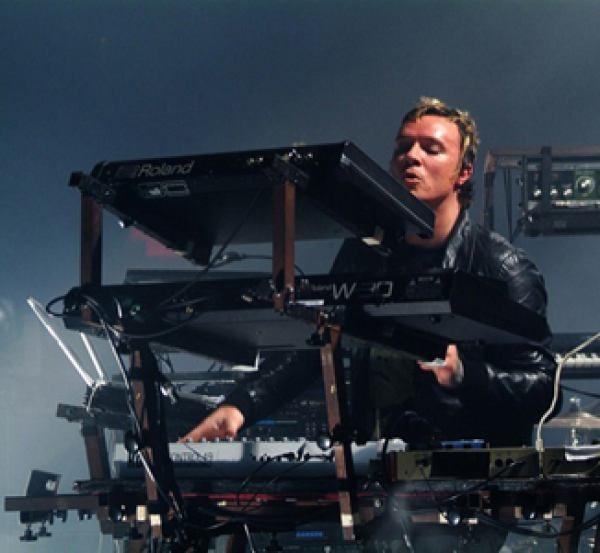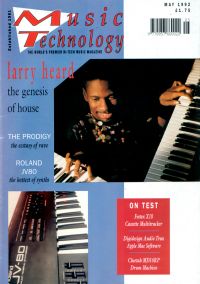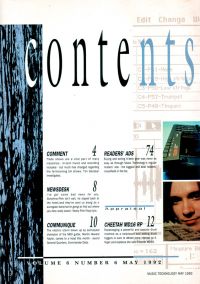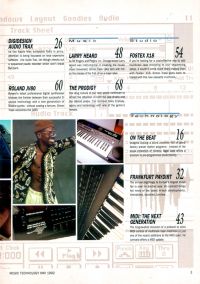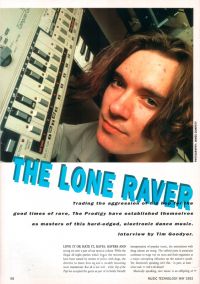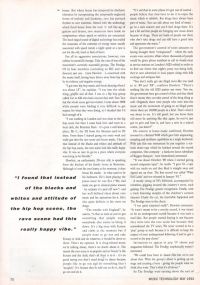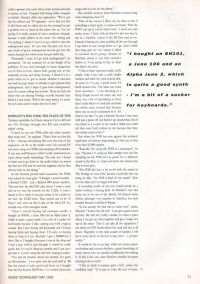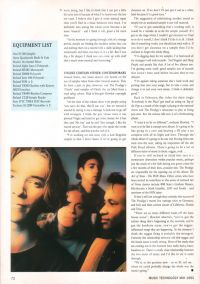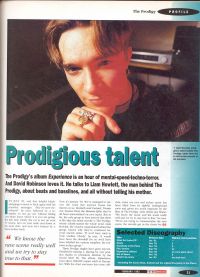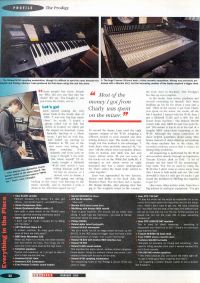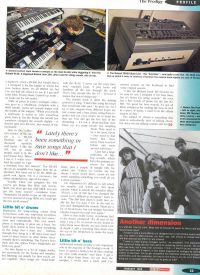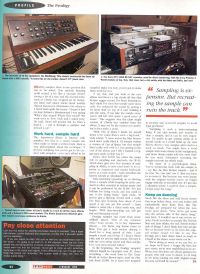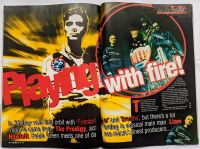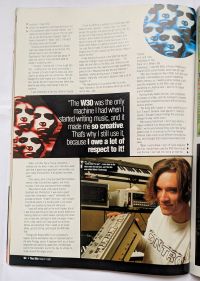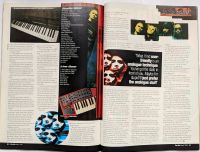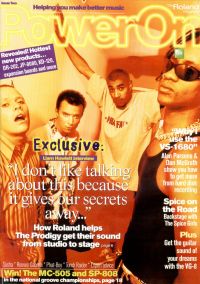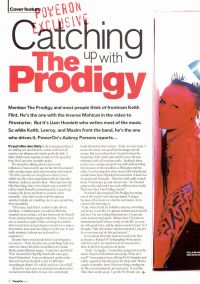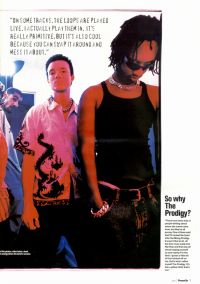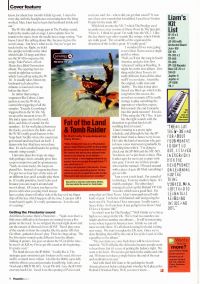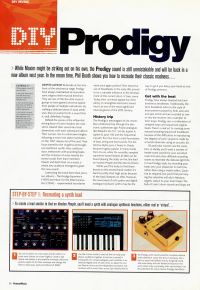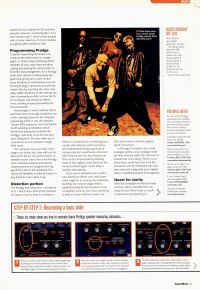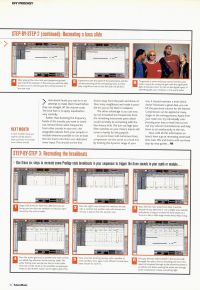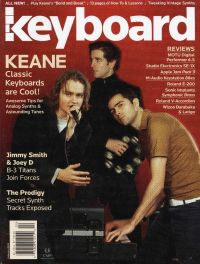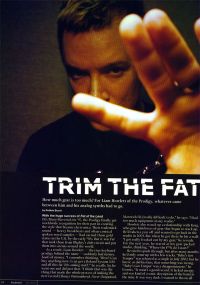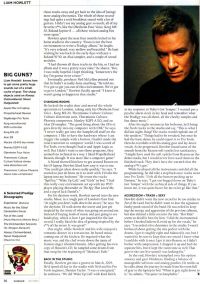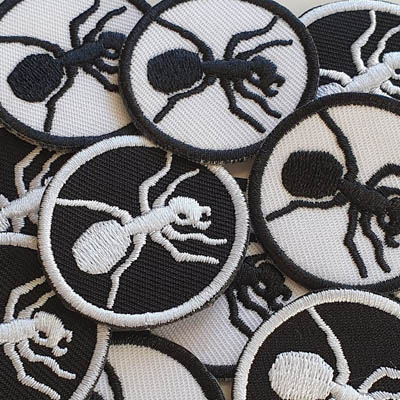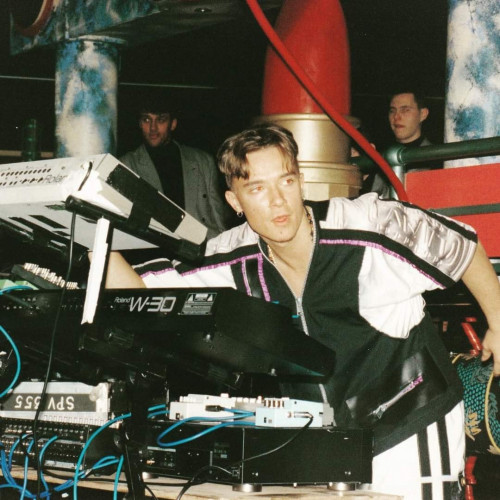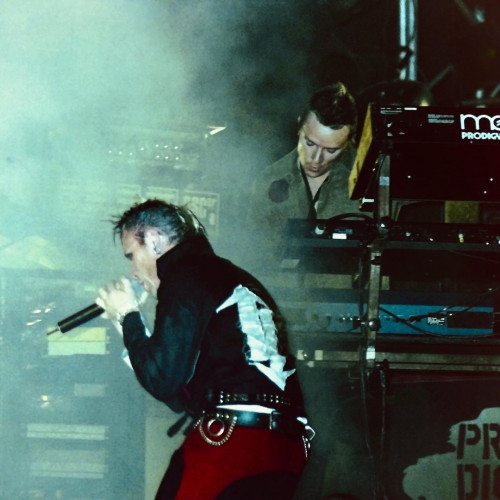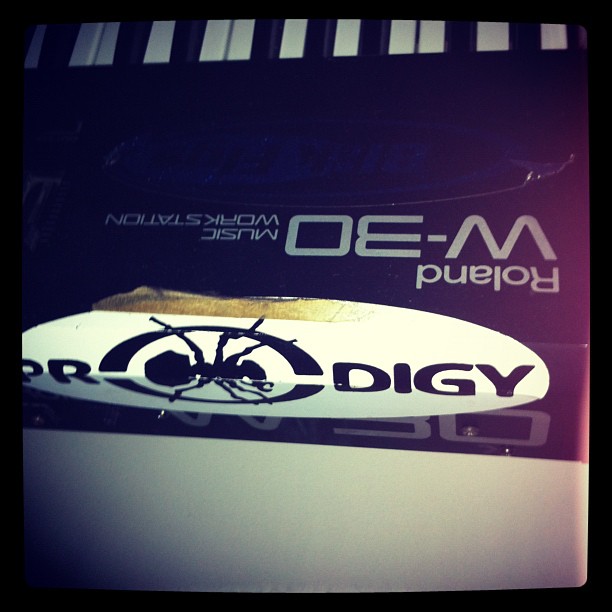Equipment
Liam Howlett’s synths and gear in studio and live.
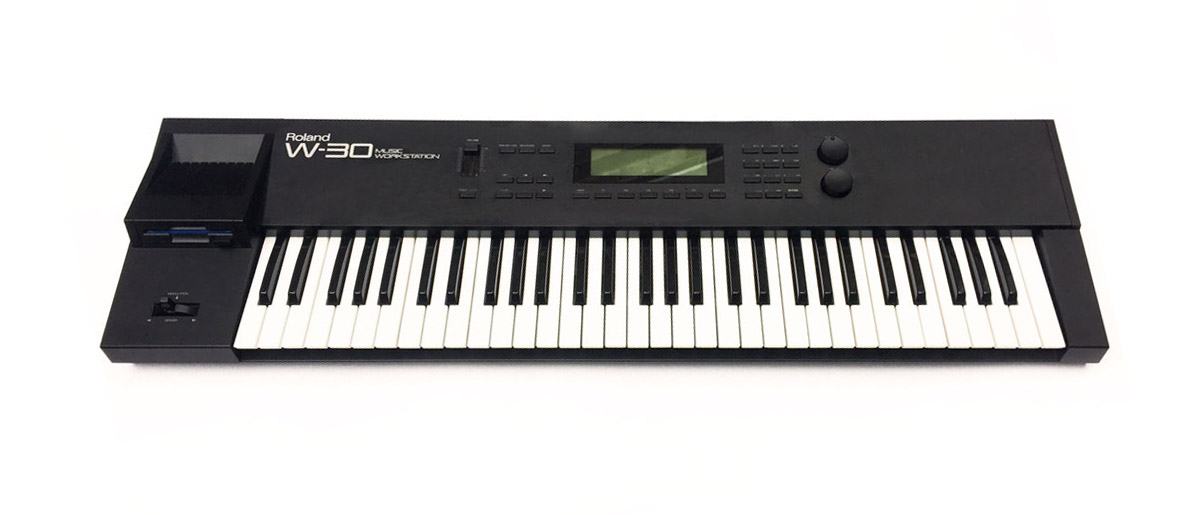
Roland W-30 Sampler Workstation
Release: 1989
Type: Sampling workstation
About:
There is only one keyboard that Liam really loves, it is his trustly Roland W-30. At the start of The Prodigy's conquest of world domination it was this machine that shaped The Prodigy's sound. All their early tracks were made pretty much with just a single W-30 and he bought more of them to use sync'd together. Liam was so used to the W-30 way of working that he didn't want to move away from it. He knew it inside and out and loved it's raw quality. He stuck to this philosophy right up to Music For The Jilted Generation, The main reason for this is because he didn't want to change the sound of the Prodigy. Although this is a sampling workstation, Liam ignored the sampling section and used it entirely as a MIDI sequencer and master keyboard. He used the W-30 as his main songwriting device until 1997's The Fat of the Land and on-stage as a master keyboard until 2008.
Gear info:
The Roland W-30 is a sampling workstation keyboard, released in 1989. It features an on-board 12-bit sampler, sample-based synthesizer, 16-track sequencer and 61-note keyboard.
The W-30 was the first music workstation from Roland, and it was sample-based, with both ROM and user samples available for sound creation. It basically contained the engine of the S-550 sampler combined with a superb Roland's MRC sequencer and a keyboard. The W-30 is compatible with the sound library of Roland's S50, S330 & S550 dedicated samplers, which is now in the public domain.
The workstation's back panel features a blanking-plate labelled "SCSI". This allowed the very rare "KW30 SCSI kit" upgrade to be fitted. The KW30 gave the W-30 the ability to behave as a SCSI Master device, and drive SCSI hard drives and CD-ROM players through a standard 25-pin SCSI cable. Copying samples to a SCSI hard drive (maximum usable capacity: 80Mb) dramatically reduces load time compared to the built-in 3.5" floppy disk drive.
Synthesizer and sampler
16-voice polyphony
Sample-based synthesis engine: ROM/RAM waves can be processed with TVF, TVA, envelopes, LFOs etc.
16-track x 16-channel MRC-style sequencer with macro/micro editing
240x64 backlit graphic LCD
3.5" DD floppy disk drive
Line input
8 dedicated audio outputs
MIDI in/out/thru
Liam's comments:
The early days
"I remember going down to the music shop in Chelmsford and saying 'What do I need?' I was going to buy a Roland S-10 Sampler and a little sequencer but the guy in the shop said, 'Wait a couple of months, there's this new thing coming out. It's like a workstation in one keyboard.' It was like, 'Man that sounds good.' I got the W-30 and, you know, for about four months I didn't go out. I stayed in every day with the headphones on learning how the thing worked. Man, I just had to learn that keyboard inside and out. "
Live set
"You know, I don't like talking about this, because it gives the secrets away... but here's what we do. Say we've got ten tracks in the set. Right, we hold the samples in bulk on the Akai which holds 32 megs and then use the W-30 to sequence the songs. Take Poison, off our Music for a Jilted Generation album. The opening bars are stored in eight bar sections which I can call up using the W-30. It usually takes Simon my keyboard tech about five minutes to load each one up before the show. "
"Everything's triggered from the W-30s. My set up at the moment is two W-30s and a spare one for the road, disks, and disks of sounds for the samplers. It's for stuff played between the tracks, you know, the links: one of the W-30's really good features is the 'loop-back' facility where the sound can go forward and loop back on itself. I dunno why but Akai have never done that. It's such a useful feature for getting smooth string sounds. "
"On some tracks, the loops are played live. Instead of sequencing them I've got two or four bars of the track all on different keys and I actually play them in. It's really primitive, but it's also cool because you can swap it around and mess it about. Of course you have to be precise with what you play, but I always have a safety drum roll either side of the key so if my finger slips off the key, which happens all the time, I can just roll it in and start it again. It's really spontaneous. It works and it's exciting."
Used:
Charly, Everybody in the Place, Wind it Up, What Evil Lurks and used for sequencing right up to Firestarter. Liam used to sequence his albums with this machine but The Fat Of The Land sequencing was the first release made entirely with the Cubase.
This lovely piece of equipment was the main keyboard at the live shows between 1990-2008. He had stored lots of cool drums and breaks to this keyboard or AKAI samplers and used this baby to trigger them. Basically this was the most used piece of equipment of The Prodigy live shows. Liam actually bought the last remaining spare keys from Roland Japan because he used to break them every 2nd show.



Related links
Articles
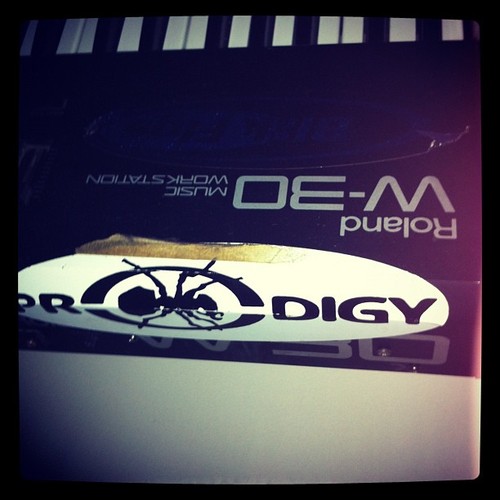
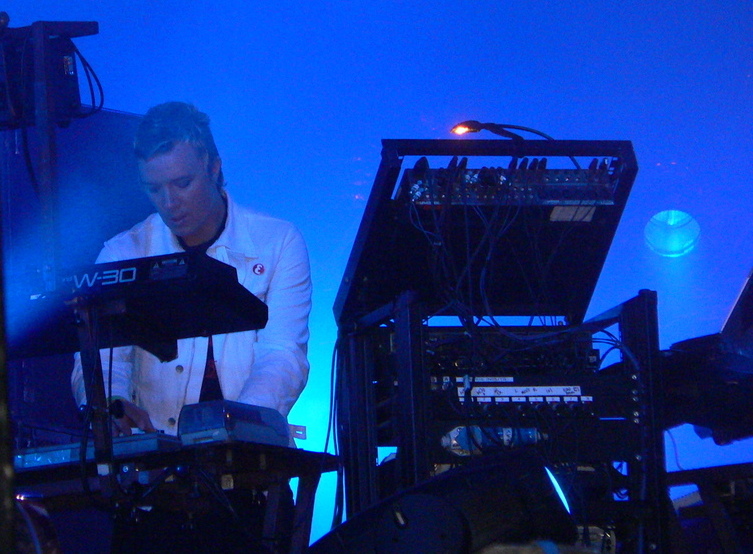
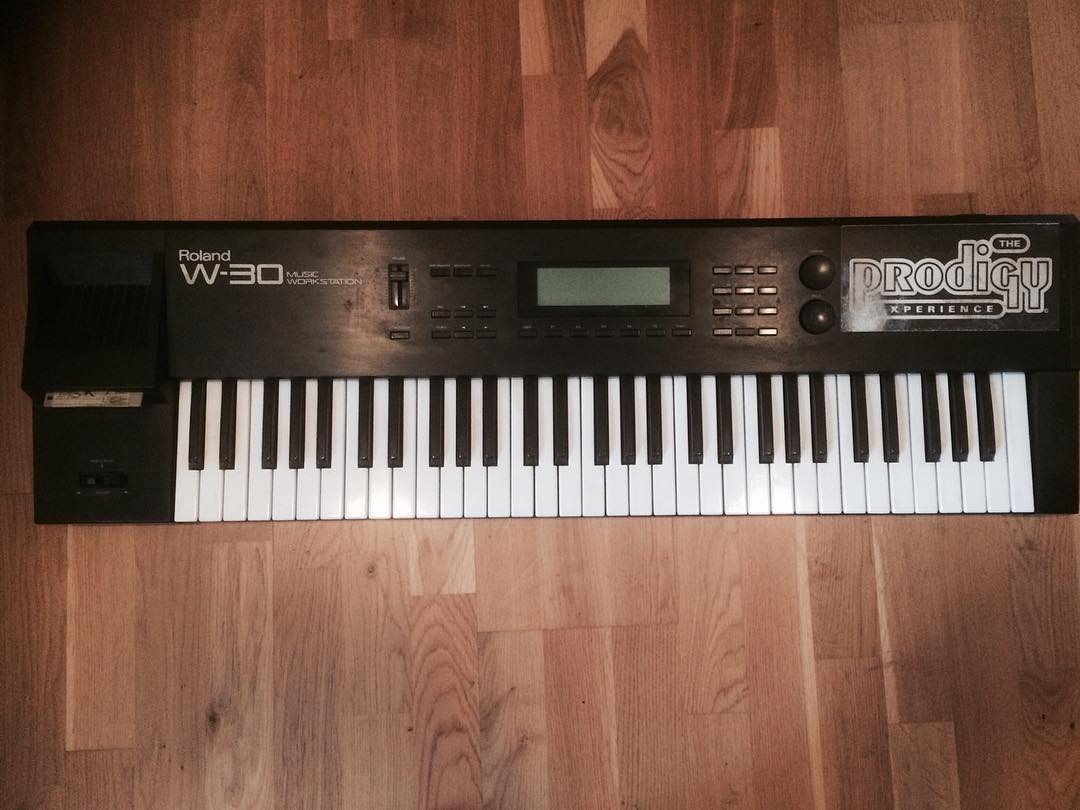
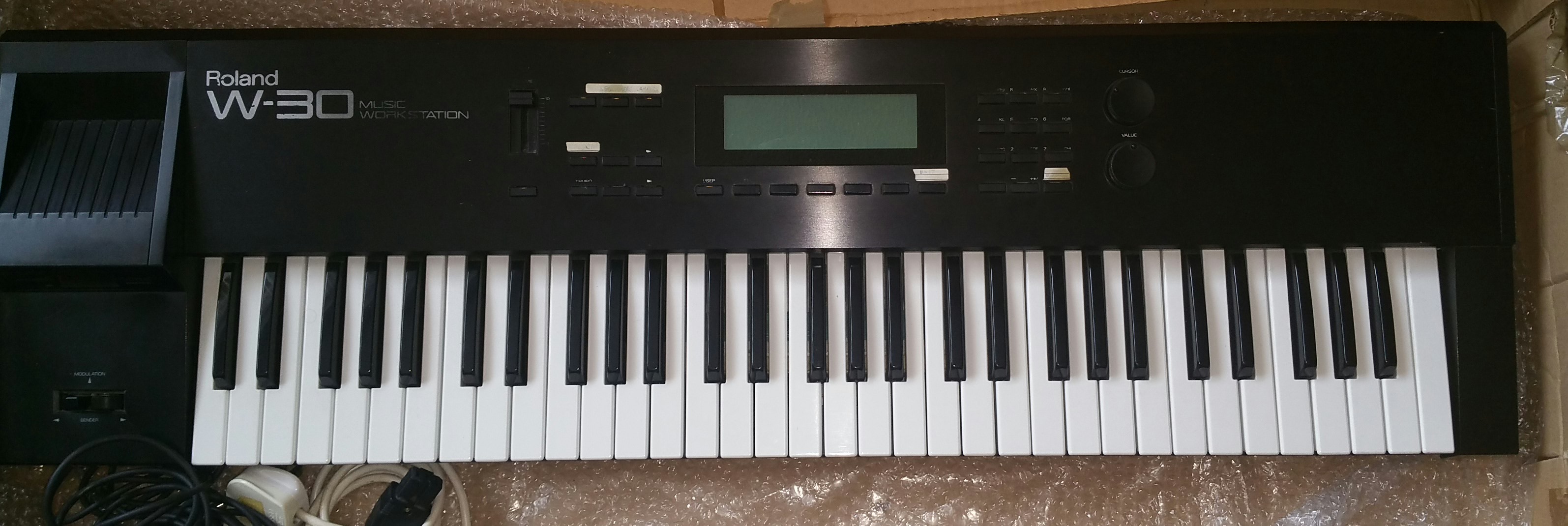
Roland related articles
01 May 1992 The Music Technology Magazine
The Lone Raver
01 Feb 1993 Future Music
Prodigious talent
01 Oct 1996 Sound On Sound
Liam Howlett • The Prodigy & Firestarter
01 Mar 1997 The Mix
Playing with fire!
01 Jan 1999 Power On
Catching Up With The Prodigy
01 Dec 2000 Future Music
DIY Prodigy
01 Oct 2004 Sound On Sound
Liam Howlett: Recording Always Outnumbered, Never Outgunned
29 Nov 2004 Korg magazine
Never Outgunned: Liam Howlett
01 Feb 2005 Keyboard Magazine
Trim the Fat
01 Oct 2010 Sound On Sound
Jon Burton: Mixing & Recording The Prodigy Live
18 May 2015 MusicTech magazine
Landmark Productions: The Prodigy – The Fat of the Land
02 Nov 2018 The Guardian
The Prodigy: No Tourists review – music for the jaded generation
30 Jul 2019 MusicTech magazine
Prodigy engineer/co-producer Neil Mclellan remembers the Jilted Generation sessions
If you know something else about this piece of gear, please mail to me or contact me via feedback form.
The Prodigy 34 pcs sticker set
Big set of The Prodigy stickers. 17 different designs (2 of each) and total of 30 stickers. Sticker sizes vary from 9 cm to 3,5 cm. Order here >


